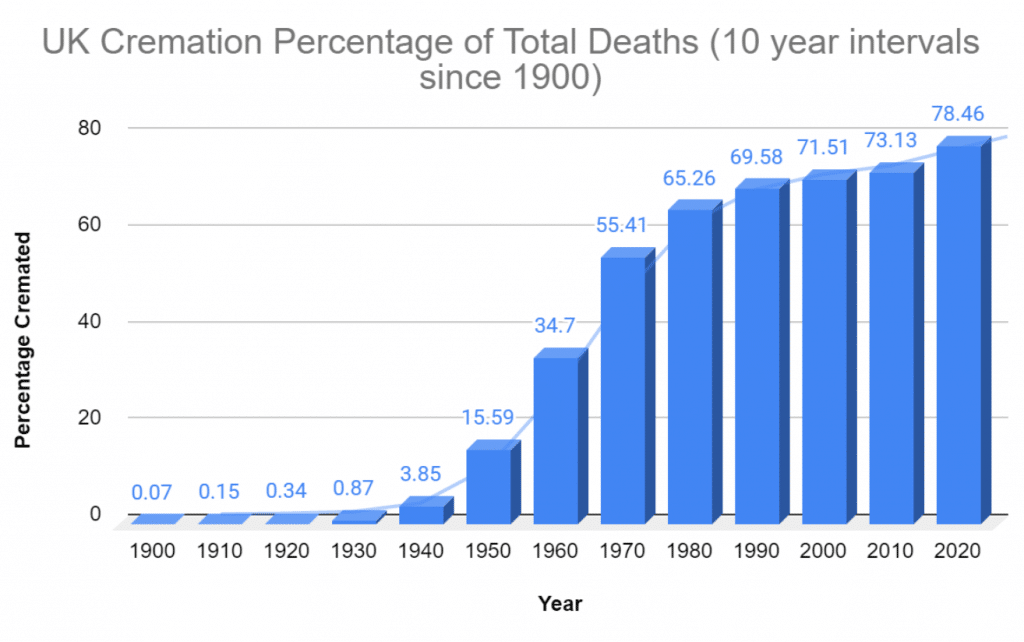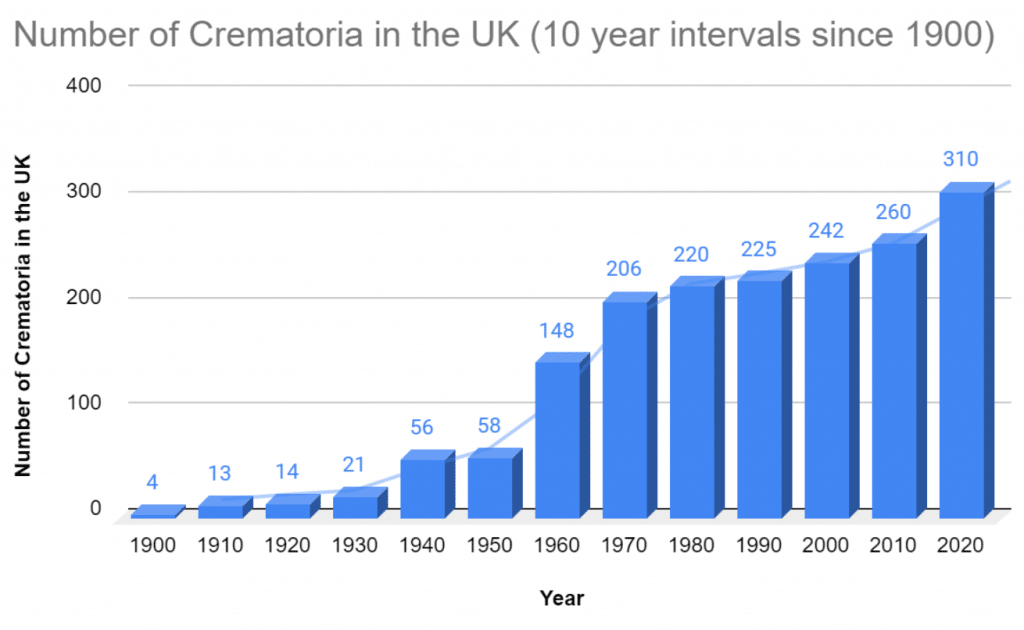With cremation becoming officially becoming legal in 1902, more accepted during The Great War, and finally surpassing traditional burials in 1968, there’s a lot of interest in how cremation statistics stack up to traditional burials in the UK. We’ve gathered some of the more important figures in one place for you to learn more about this increasingly common practice.
Cremation vs. burial statistics UK
Consult the charts below to see how cremation has become an ever-increasingly popular option in the UK over the last 120 years. An immediately apparent conclusion is that cremation became increasingly common over the last 120 years, with a ten-fold jump between the 1940s and 1970.
Between the 1950s and 1970s, the number of crematoria in the UK increased nearly fourfold, indicating a massive change in attitudes towards cremations as a viable and accepted alternative to traditional funerals.
You can view the raw data used to compile these charts at cremation.org.uk.


Cremation vs. burial costs in the UK
As of 2020, the average cost of a traditional burial is double that of a cremation. While it differs from region to region and country to country, Brits can expect to pay £881 for cremation and £1698 for burial on average. Both cremation and burial are cheapest in Northern Ireland, where you can expect a cremation to cost about £410, while burials are about £510.
In more populous areas, the relative savings of cremation become more apparent, with cremations in London costing about £790, compared to burials at £4400. There are a number of factors contributing to this discrepancy, with the availability of burial plots being the most significant.
These statistics were taken from FuneralGuide.co.uk, and the original article can be found here.
Visit the Sussex Funeral Services page and click on ‘our prices’ to find out more about the different types of services we have available as well as their associated costs.






